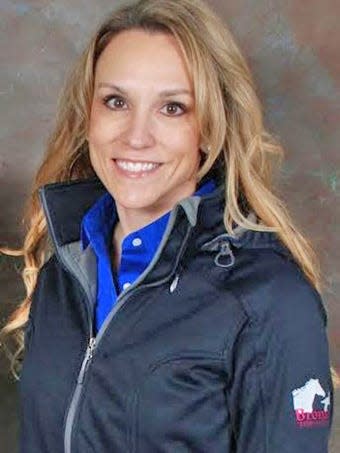Veterinary Viewpoint: What do you know about your pets?
Typically, I spend a lot of time educating pet owners about prevention and treatment options. Sometimes it’s fun find what you as pet owners may already know.
True or False
Puppies and kittens are born blind, deaf, and toothless.
Cats are lactose intolerant and shouldn’t be given milk.
Dogs with long noses have more health problems than squashed-faced dogs.
Dogs and cats have ridges similar to human fingerprints on their paws
When cats walk, their left front legs move in tandem with their left back legs and their right legs do the same.
A group of cats is called a kindle.
Long, floppy ears can mean more ear infections.
Dental disease in pets doesn’t usually show up until the animal is 4 years old.
A cat’s tail acts a rudder and a counterweight to help him balance.
People can transmit some diseases to cats and dogs.
True. These youngsters are completely helpless upon birth.
True. Feeding a cat milk will encourage stomach upset and diarrhea.
False. Brachycephalic (squashed nosed pets in both cats and dogs) have more health problems due to their narrow airways.
False. Dogs and cats carry their signature ridges on their noses.
True. The only other animals that move this way are giraffes and camels.
False. A group of cats is called a Clowder. A group of kittens is called a kindle.
True. Moisture gets trapped under the long ears. Dogs with these ears need
More care to keep their ears dry and to prevent infection.
False. Dental problems can begin at a very young age.
True. A cat’s tail signals his mood. When relaxed, the tail gently sways, straight and tall means he’s in charge and happy, a quivering tail means he might be irritated, while a thumping tail means he wants to be left alone.
True. Transmission of diseases is not common, but it can happen.
Pet owners want the best for their friends and most owners are quite knowledgeable about caring for their pets.
New owners (those who have never owned a pet) and current owners really do love their pets, sometimes to the pet’s detriment. Love does not mean overfeeding even when Fido and Fluffy really appreciate the “extras.”

The pet food industry continues to grow and exploit pet owners by pushing new theories and products on anxious consumers who are eager to please their canine and feline friends as evidenced by the pet industry sales report of 2020, which totaled $100 million
Different breeds of dogs and cats are susceptible to different heath conditions. Dalmatians are prone to developing urinary stones and Miniature Schnauzers tend to have high cholesterol and high blood fat levels.
Labrador Retrievers are “easy keepers” and can quickly become obese. Long haired cats do have more hairball problems.
Breed specific diets for certain health conditions are helpful, but separating Golden from Labrador Retrievers with breed formulas is unnecessary.
The best method for feeding should always be determined by individual health concerns and not by breed.
Fast eaters may benefit from a larger-size kibble designed to slow down their eating. Flat-faced breeds may benefit from kibble shapes that they can more readily pick up with their teeth.
However, pet owners will not harm their pets by feeding “all breeds” pet food. Portion control is the key, as is knowing your pet’s health and feeding accordingly.
If your pet has a specific health condition feeding a prescribed diet is best.
Feeding puppy or kitten food to a gown cat and vice versa is not a good idea. People food is never a good idea. Feeding tuna fish to cats is also not recommended as it contains mercury.
Going for the label marked “grain free” is not good for Fido. These grain-free foods can lead to heart disease in dogs.
Besides spending on pet food, pet owners are spending more on pet treats, vitamins and supplements. Unless supplements and vitamins are prescribed, they will not benefit pets and may even do some harm.
Breed specific diets can provide benefits, but they aren’t a replacement for therapeutic diets for many breed-related and diet-responsive health conditions.
The only sure way to know if what you are feeding is what your pet needs to thrive is to check with your veterinarian or seek a consultation with a board certified veterinary nutritionist.
— Dr. Joanna Bronson of Bronson Veterinary Services, located at 452 W. Central Road, Coldwater. Contact her at 517-369-2161 or visit bronsonvetservices.vetstreet.com.
This article originally appeared on Sturgis Journal: Veterinary Viewpoint: What do you know about your pets?
